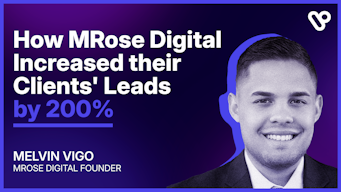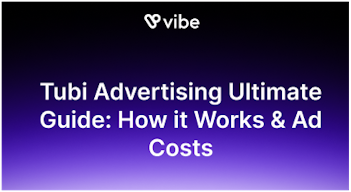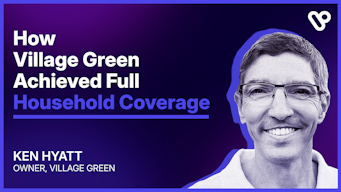What is OTT advertising, and why does it matter?
You might have been hearing about OTT or CTV advertising here and there, and you’re likely to hear more of it as time goes by. OTT advertising might sounds like a new ad tech term that will take too much brain power to fully grasp, but it doesn't have to be: bare with us, and you’ll see how clear these hazy terms will soon become.
I) What are OTT and CTV?
OTT, meaning Over-the-Top, refers to the technology that allows users to watch video content over the Internet, rather than cable and satellite, the way we used to. It is a term that mostly concerns end user experience.
OTT is closely related to Video on Demand (VOD) which is the mechanism allowing users to watch videos outside of a specific scheduled time. Users can now watch content when and where they chose, whether it be on the commuting train, on their sofa, in the kitchen… Hence the “on demand”. VOD can be accessed through streaming or downloading.
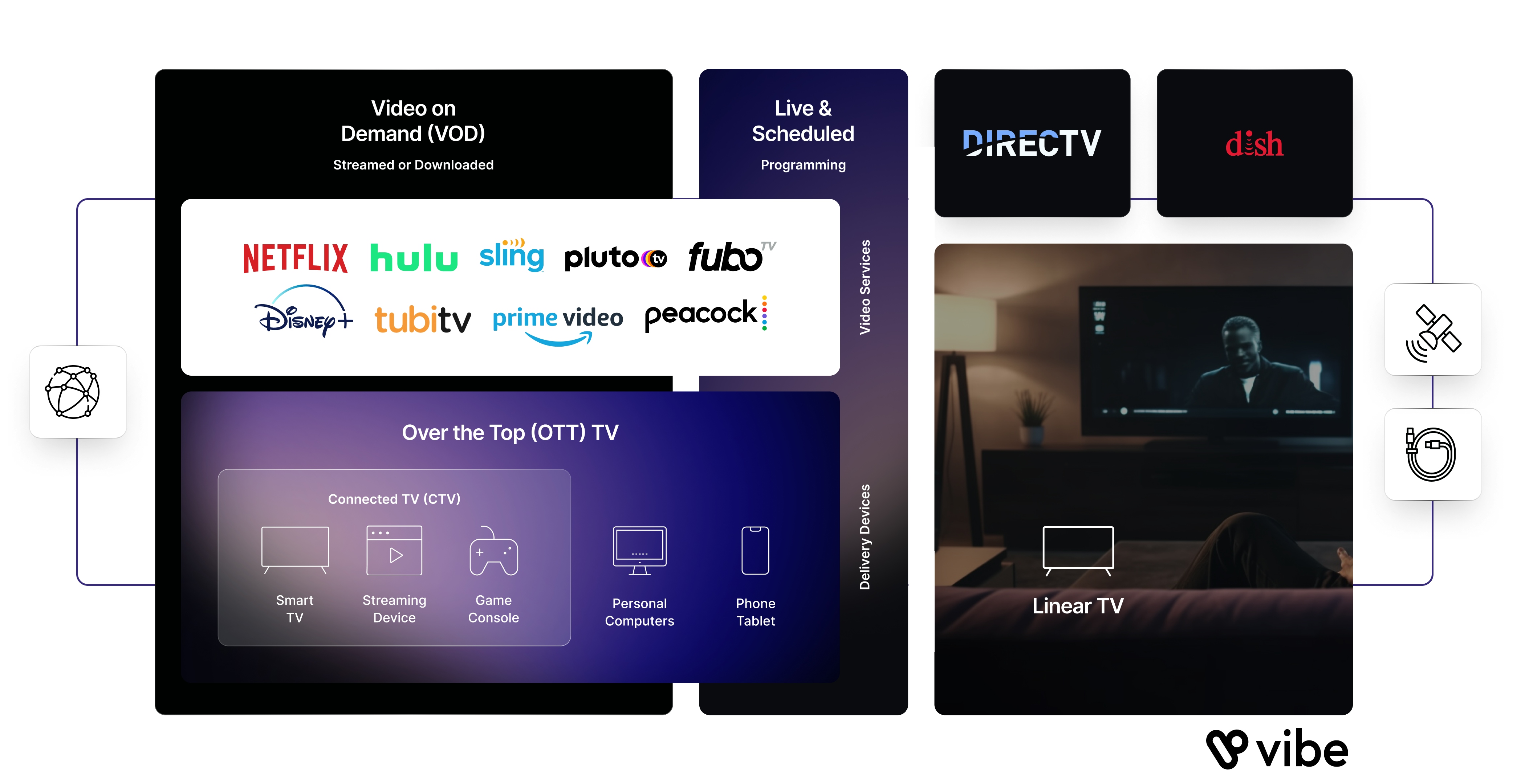
OTT matters because Streaming TV viewership has been steadily increasing over the last few years. There are 4,507 million users worldwide in 2024 compared to 2,430 millions in 2018 and that number is expected to grow up to 4,216 millions in 2027*. User penetration in the USA is expected to be 85.2% in 2023**.
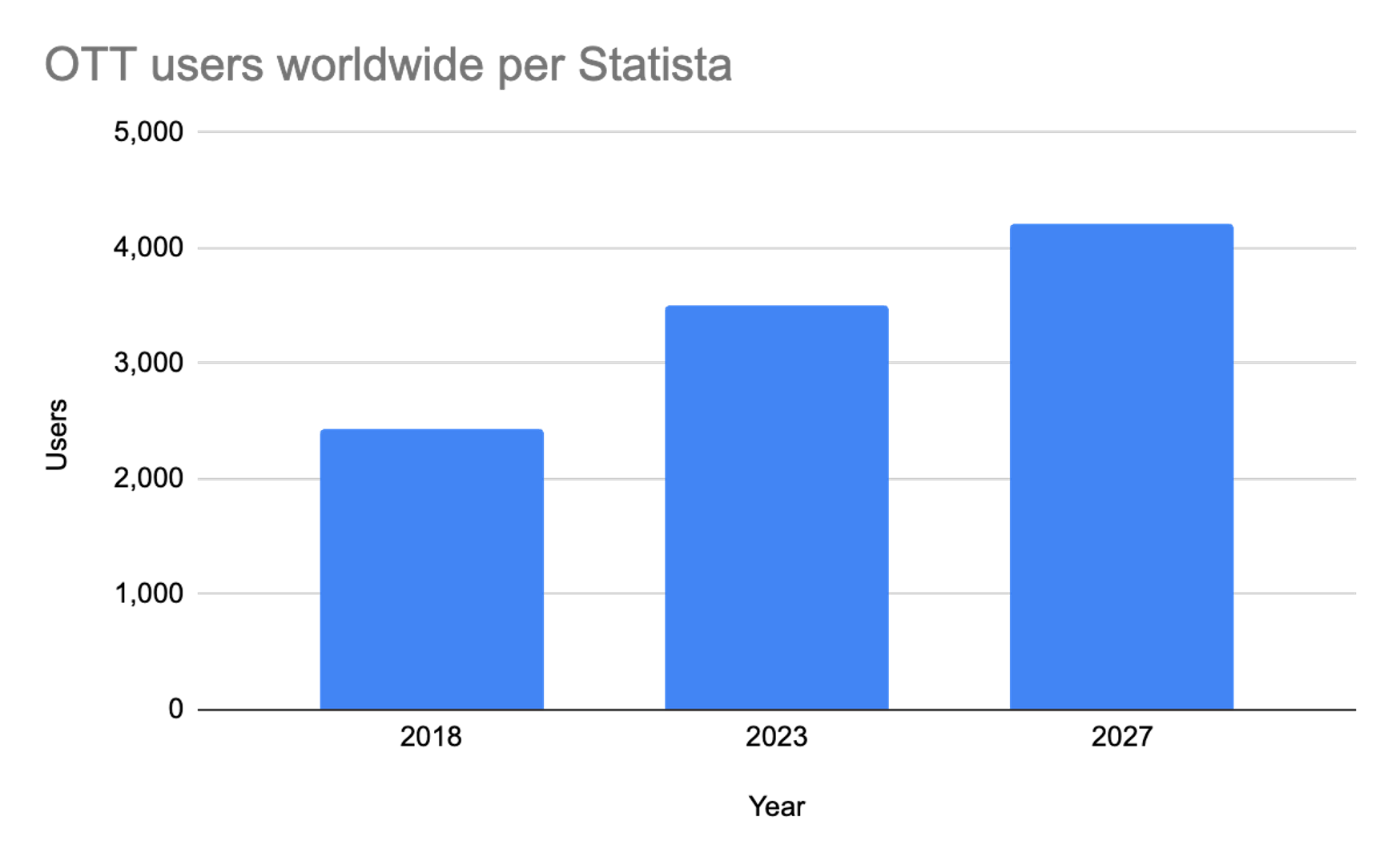
II) If you hear about AVOD SVOD, TVOD… those are OTT business models for publishers
Ad-supported Video on Demand (AVOD) Subscription Video on Demand (SVOD), Free Ad-supported Streaming Television ( FAST), these are the different ways publishers or aggregators of content within the OTT ecosystem monetise the content service they offer. More often than not, these OTT companies use a mix of business models to find some balance in revenue streams.
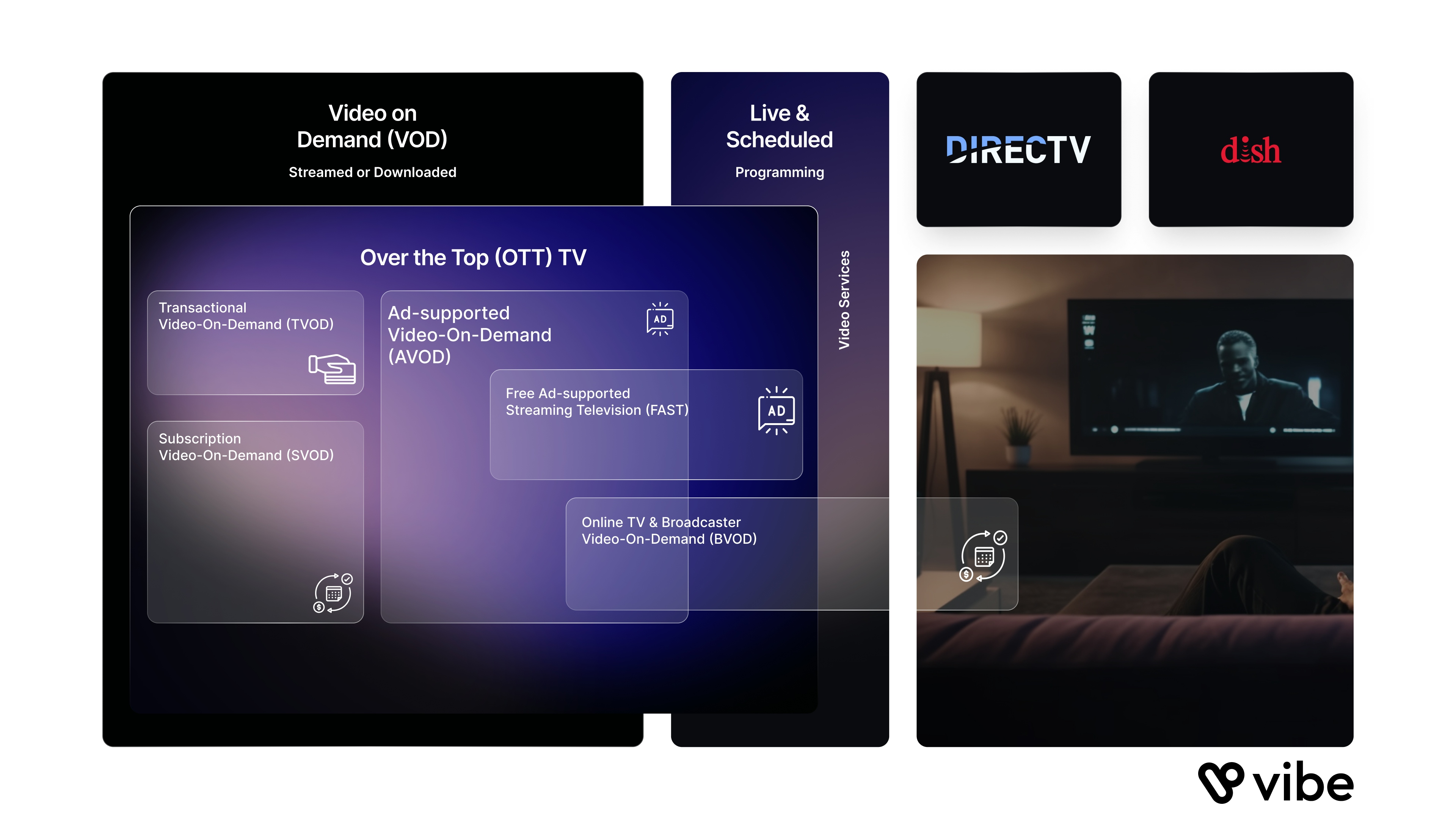
- Ad-supported video-on-demand (AVOD): users watch ads
On Demand video content is freely accessible provided that users watch advertisements. Ad revenue is used to make up for production and hosting costs.
Ex: Dailymotion, YouTube, Pluto TV.
- Subscription Video-On-Demand (SVOD): users pay a subscription fee
On demand video content is accessed via flat rate subscription. The pressure to produce new and enticing content is strong as users can opt out at any given time.
Ex: Netflix, Disney +
- Free Ad-Supported Television (FAST): users watch ads
On Demand video content is freely accessible provided that users watch advertisements. Content is both live and on-demand.
Ex: Pluto TV, Tubi, and Peacock
- Online TV & broadcaster video-on-demand (BVOD): users pay a subscription fee
Video content is accessed through a subscription, via traditional tv package.
Ex: Hulu,Sling tv
- Transactional video-on-demand (TVOD): users pay once on a per view basis
Specific On Demand Video content is accessed by renting or downloading, in one discrete payment. Content tends to be premium, movies, and recent releases.
Ex: Google play movies.
- Electronic Sell Through (EST): users pay once to download a specific content.
- Download To Rent (DTR): user pay once for a limited access in time (the fee is smaller than EST)
- Hybrid video-on-demand (HVOD): users pay a subscription fee & watch ads, or any mix of the above business models
Video content is accessed through subscription and provided that users watch ads.
As stated above, a big chunk of OTT companies use Hybrid Video On Demand (HVOD) to grow their business, as in reality the limits between the business models are blurry, and companies often generate a portion of their revenue with ads to complement revenue from user subscriptions.
Now that you fully get the users and publishers landscape, the question becomes, how can you reach their ad inventory?
III) As an advertiser or an agency who should I work with to start OTT advertising?
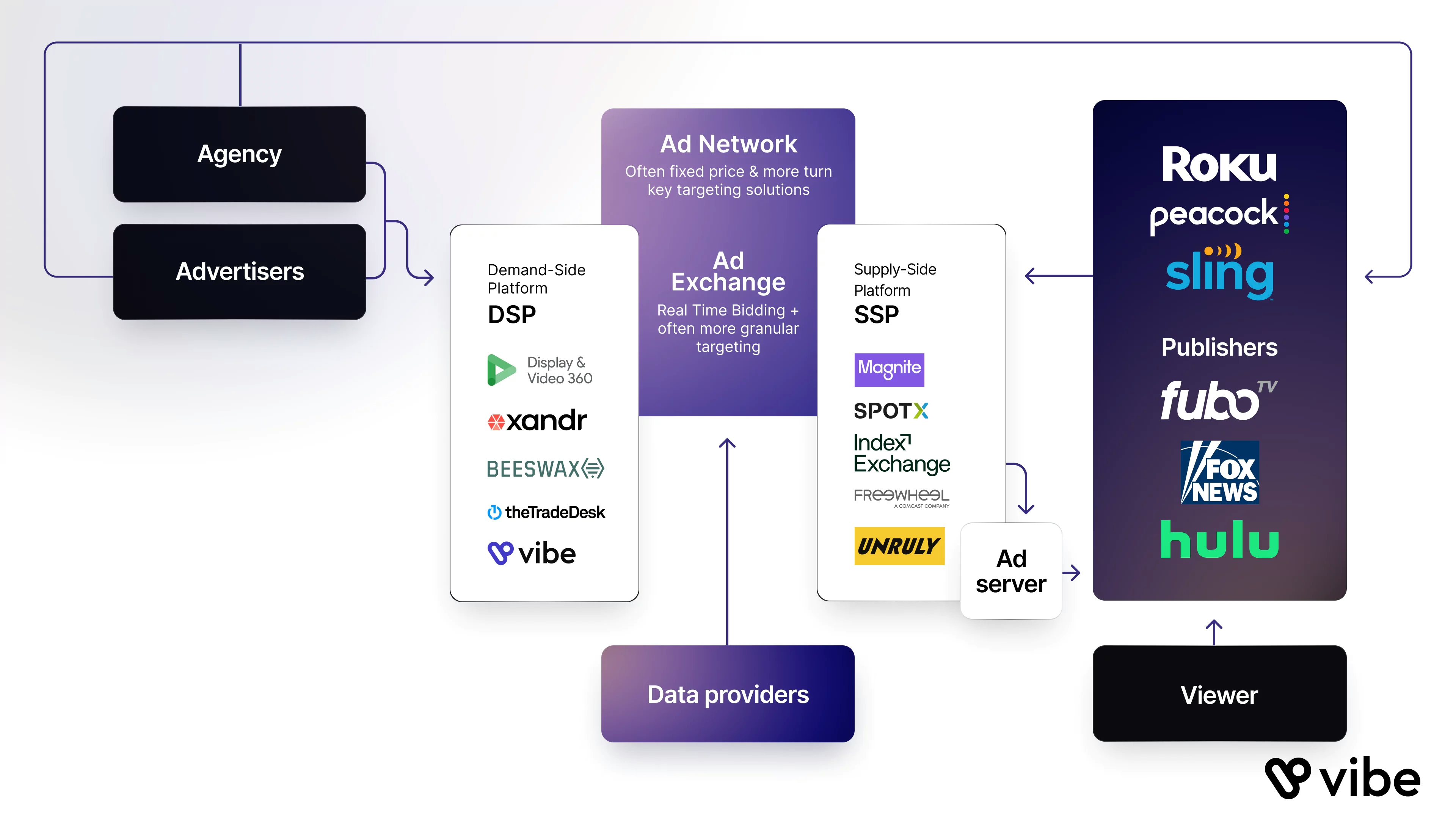
As an advertiser or agency eager to start OTT advertising, you could reach out to the publishers themselves or DSPs:
- Publishers : are the ones producing or aggregating video content from different publishers. They can have their own DSP/SSP for the advertiser to access their ad inventory. They could follow a HVOD, AVOD , FAST or BVOD business model.
- DSPs / Ad exchanges: are the ones that facilitate the buying at scale of large OTT ads inventory, through Real Time Bidding, and would have features such as frequency capping.
As a reminder, DSPs help buyers buy ad inventory (ensuring they get the best business performance), SSPs help publishers sell inventory (ensuring they get the max revenue). Ad Servers store, manage, and deliver digital ads to users.
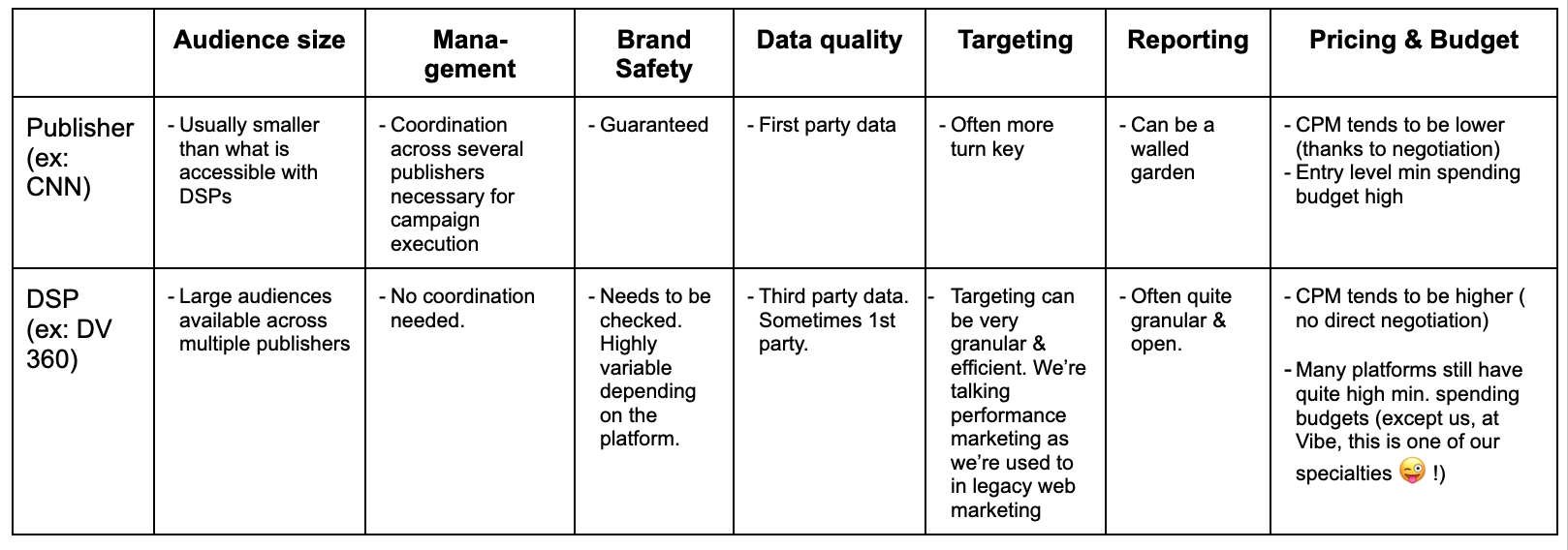
Choosing one type of OTT advertising platform or another really depends on your brand, budget, and campaign business goals.
So why all the hype, and why would you want to start OTT advertising ? Because with the technological development of OTT and related ad platforms, you can now get advertising that offers:
- Massive, precise reach
Together with
- Brand & Performance Marketing at once!
Ready to start OTT advertising ? Read our CTV ads best practices article to know more about ad specs, formats, and best practices.
